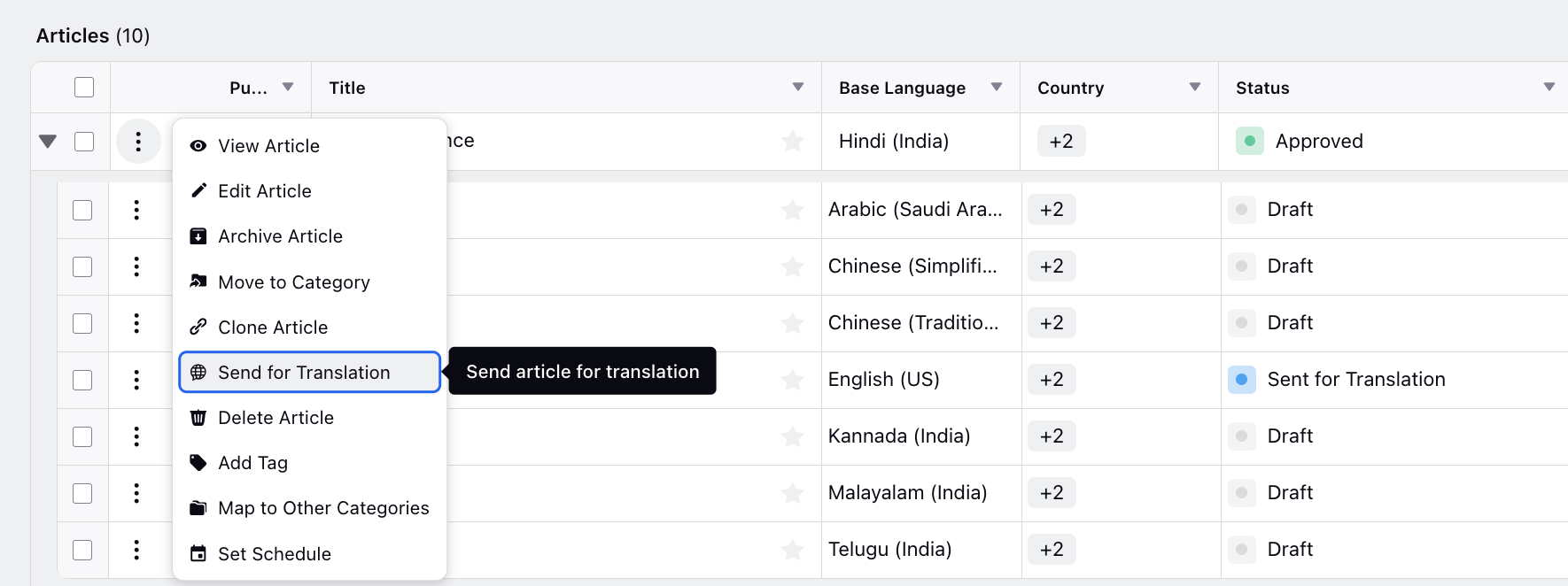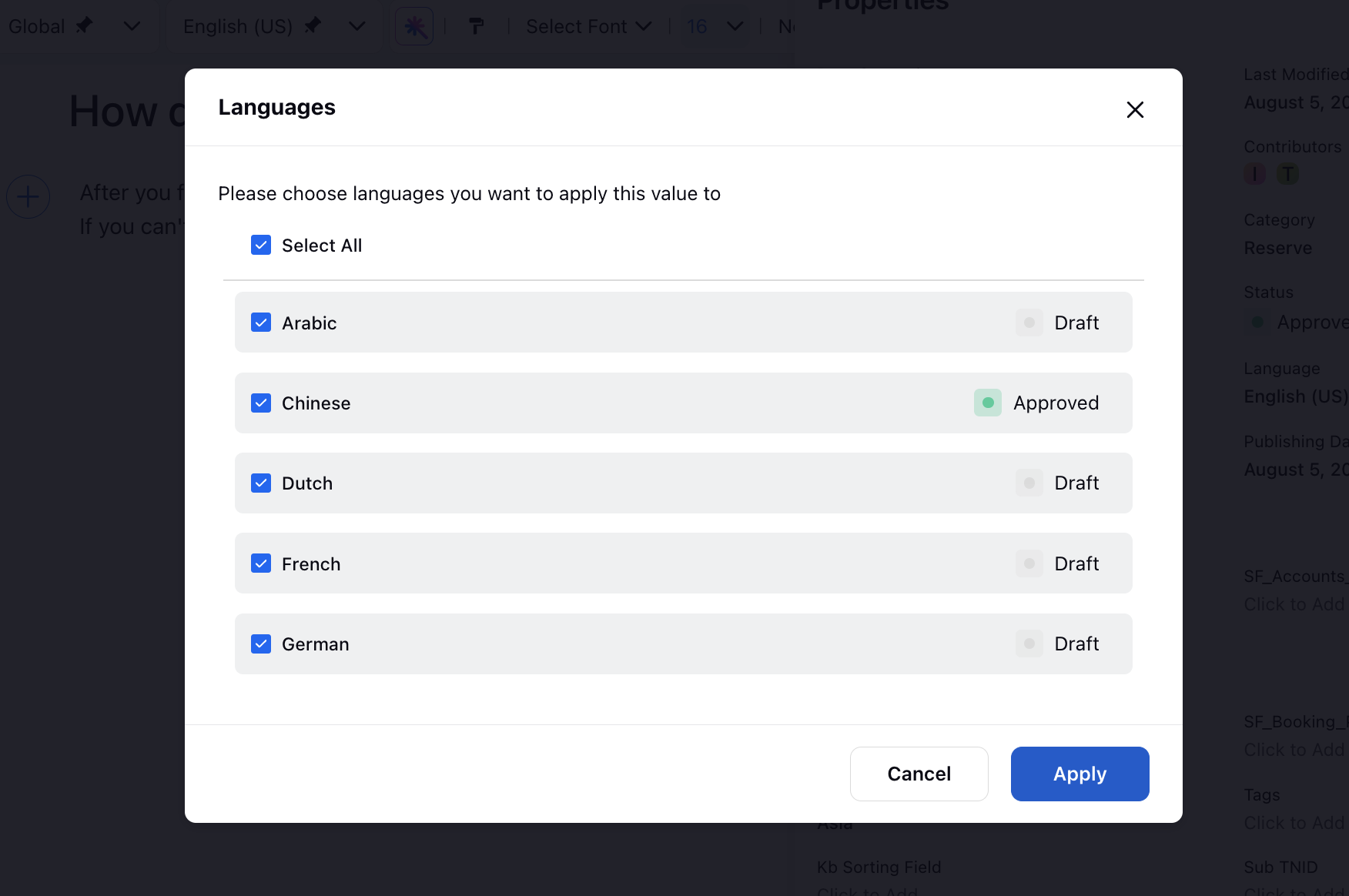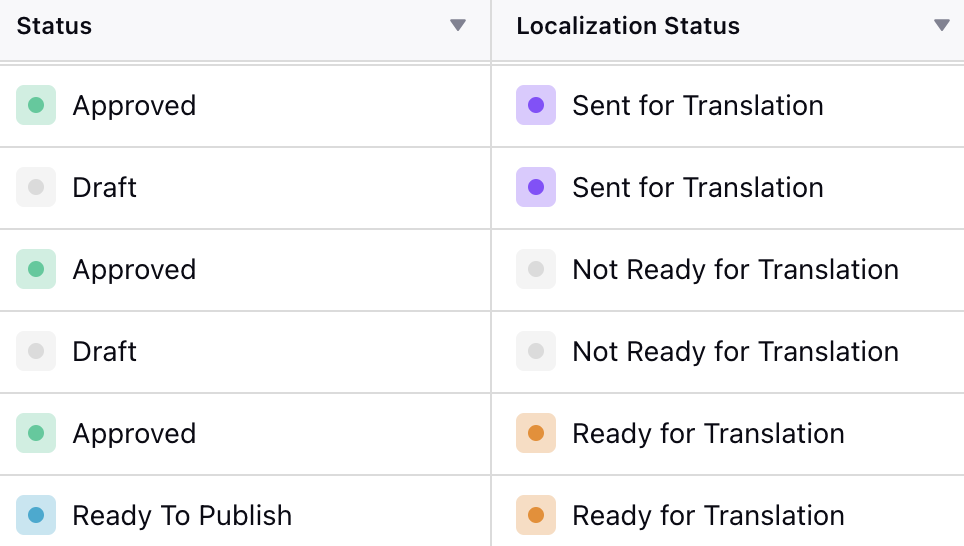Third-Party API Integration for Translation
Updated
You can enhance the global reach and efficiency of your content by seamlessly integrating third-party translation tools into your Sprinklr Knowledge Base workflow. With API integration, you can effortlessly send articles for translation to third-party translation tools.
Note: To utilize this feature, users must have the Send for Localization permission under Knowledge Base.

To learn more about getting this capability enabled, please work with your Success Manager.
To Send Articles for Translation
To send articles for translation, use the 'Send for Translation' action, accessible in the base article options menu when the article status is 'Approved' or 'Ready to Publish' and when none of the translations are in the status 'In Translation.'
Hover over the Options icon next to the desired base article and select Send for Translation. The 'Send for Translation' button remains available at the base article until the translation job is initiated.

Next, choose the languages for translation and click Apply. The status of all translations will be displayed, and you can use the "Select All" option to apply actions to all variants in the list.

Localization Status Column
There will be a localization status column representing the translation status for base articles.
When the base article status is 'Approved' or 'Ready to Publish,' and none of the translations are in the status 'In Translation,' the localization status at this stage will be Ready for Translation.
In contrast, when the base article or country variant is in a 'Draft' or 'In Approval' status, the localization status is marked as Not Ready for Translation.
Once the article is sent for translation successfully, the localization status of the base article will change to Sent for Translation. As soon as the third-party localization tool acknowledges the request, the status is updated to In Translation. The final stage, indicating the completion of all translations, is marked as Translation Completed when the localization job concludes, and all translations are successfully posted back. This sequential flow ensures a clear and organized tracking of the translation process at various stages.
